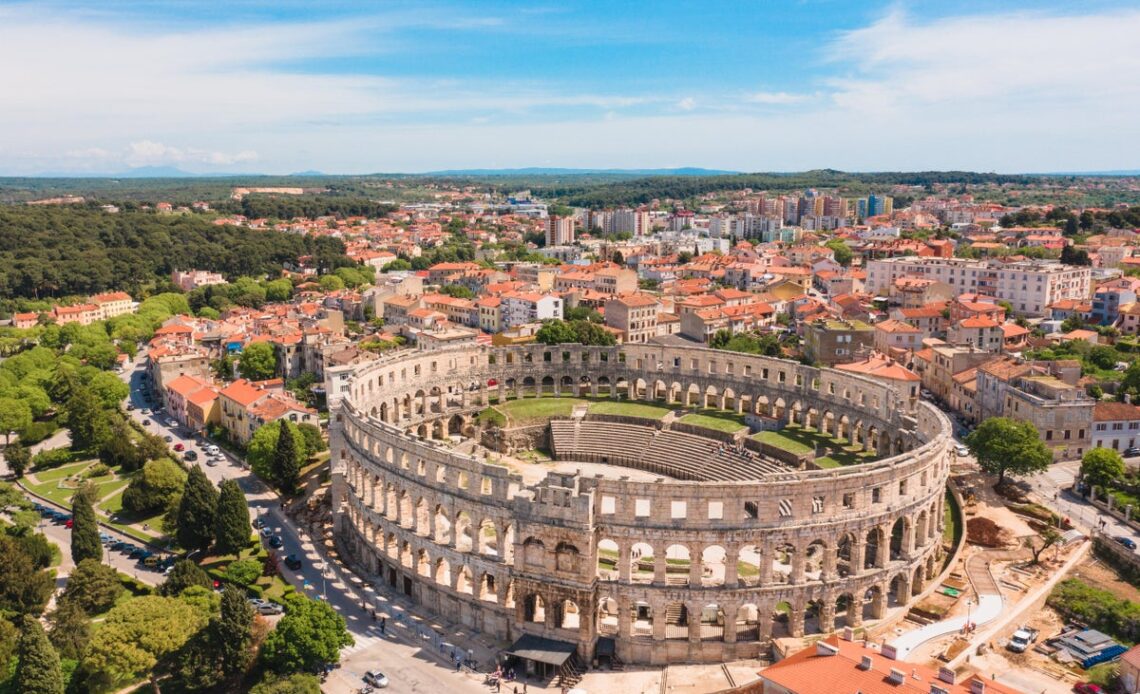From the ancient Greeks, Romans and Illyrians to the Venetians, Austrians and Hungarians, so many civilisations have left their mark on Croatia over the centuries. With this extraordinary legacy, it’s not surprising that Croatia’s culture is incredibly rich – nor that eight of the country’s 10 Unesco World Heritage Sites are cultural ones. Ancient Roman ruins, medieval fortresses, Venetian architecture and handsome baroque towns go hand in hand with captivating folk traditions, fascinating museums and an exciting contemporary art scene that is constantly evolving.
Walk in the footsteps of the Romans when you wander round the remarkably well-preserved amphitheatre in Pula. It’s been around since the first century BC, and its passages, tiers, galleries and cellars take you back to the time when 20,000 spectators would gather in this enormous space. Time your visit for mid-July and you can watch screenings during the Pula Film Festival, many of which takes place in this atmospheric setting.
In summer, you can enjoy the a capella melodies of Klapa singers in Dalmatia
(CTB/Denis Peros)
Roman history is literally all around you when you stroll through Diocletian’s Palace in Split. Built between the late 3rd and the early 4th centuries AD, the palace fell into ruin not long after and became colonised by residents over the centuries. Now its graceful columns and arches form the backdrop to cafés, shops and apartments, and its open-air spaces hum with the sound of summertime classical concerts.
That sound of music is everywhere in Croatia, especially during its many festivals. Warm summer nights in Dalmatia often come with the hauntingly melodic sound of klapa singers, whose a cappella songs form such an evocative soundtrack to Adriatic life. Don’t miss the annual klapa festival held every July in the exquisite town of Omiš, which straddles the mouth of the Cetina River south of Split. And in the Međimurje region tucked away in Croatia’s north-west corner, its age-old folk singing tradition is so embedded into its cultural fabric that it’s on the Unesco List of Intangible Cultural Heritage of Humanity.
Must-visit museums and galleries
Enjoy picture-perfect views at Trakošćan Castle and its scenic, forest-fringed lake
(CTB/Domagoj Sever)
While you’re in Croatia’s northern regions, you can go deeper into history at the Krapina Neanderthal Museum, where you can see the evolution of humankind on the site where important Neanderthal remains…
Click Here to Read the Full Original Article at The Independent Travel…
